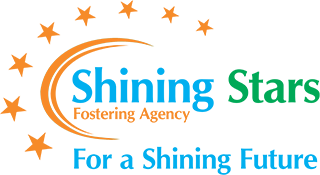![Modern Slavery is closer than you think! Modern Slavery and Child Trafficking Modern slavery is happening in the UK today and it is closer than we think, but the crime can be difficult to spot and can […]](https://shiningstarsfostering.com/wp-content/uploads/2021/05/modern-slavery-shining-stars-fostering.jpg)
Modern Slavery and Child Trafficking
WHAT IS MODERN SLAVERY?
Modern Slavery is a serious and often hidden crime in which people are exploited for criminal gain. The impact can be devastating for the victims. Modern slavery comprises slavery, servitude, forced and compulsory labour and human trafficking.
There were an estimated 40 million people in slavery globally in 2016 and 10,000 –13,000 potential victims in the UK, however many victims are not identified or reported.
TYPES OF MODERN DAY SLAVERY
Examples of industries and services where slavery exist in the UK today, the victims of which include children and young people are:
- Sex industry, including brothels;
- Drugs industry – e.g. cannabis cultivation
- Retail – e.g. nail bars, hand car washes
- Factories – e.g. food packing
- Agriculture – e.g. fruit picking
- Hospitality – e.g. fast-food outlets
- Domestic labour – e.g. cooking, cleaning and childminding
Additionally, victims can be forced into criminal activities such as theft or begging or used for organ harvesting. For more information specifically on the different types of modern slavery offences, see the Home Office Report – A typology of modern slavery: offences in the UK, published in October 2017.
THE LAW
Under UK legislation, all modern slavery offences are punishable by a maximum sentence of life imprisonment. Where victims of modern slavery have been forced into committing a crime by the perpetrators, UK legislation provides that those victims may have a defence against prosecution.
- England and Wales: Modern Slavery Act 2015
- Scotland: Human Trafficking and Exploitation (Scotland) Act 2015
- Northern Ireland: Human Trafficking and Exploitation (Criminal Justice and Support for Victims) Act (Northern Ireland) 2015
The legislation was introduced in July 2015 in the form of The Modern Slavery Act . The legislation created the post of Anti-Slavery commissioner and placed a duty to notify on specified public authorities, including local authorities to report potential victims of trafficking to the National Crime Agency via the National Referral Mechanism (NRM).
SIGNS TO LOOK OUT FOR
Victims of modern slavery can be found anywhere. There are certain industries where they are currently more prevalent, such as nail bars, car washes, agriculture and fishing, building sites and the sex industry. Other high-risk situations include when there is a need for a sudden injection of workers into the workforce, such as seasonal staff or construction for a major event. However, victims may also pass through transport hubs, health services and other public places or be found in private homes.
INDICATORS / SIGNS OF POTENTIAL VICTIM (Some signs but are not limited to these):
• Missing episodes (especially from care – under 18s)
• Limited/sporadic school attendance (under 18s)
• Distrustful of authorities
• Expression of fear or anxiety
• Signs of psychological trauma (including post-traumatic stress disorder)
• The person acts as if instructed by another
• Injuries apparently a result of assault or controlling measures
• Evidence of control over movement, either as an individual or as a group
• Passport or documents held by someone else
• Limited social contact/isolation
• Limited contact with family
• Signs of ritual abuse and witchcraft (juju)
• Substance misuse
• Person forced, intimidated or coerced into providing services
• Threat of being handed over to authorities
• Threats against the individual or their family members
• Being placed in a dependency situation
• Unwanted/underage pregnancy
• Inappropriate sexual behaviour
• Incoherent/changing account of events
• Repeating a story that you have heard elsewhere
• Unexplained eagerness to leave a safe space/to work
• Sexually transmitted diseases
REPORTING YOUR CONCERNS
Any public sector worker identifying a potential victim should follow their organisation’s own safeguarding procedures. This will include filling in a National Referral Mechanism (NRM) form
or Duty to Notify form, if that is part of your organisation’s safeguarding procedures and statutory duties.
Additionally, the case should always be reported by one of the following methods:
- Phoning 999 if there is an immediate risk of harm
- Reporting to the police on 101 or the
- Modern Slavery Helpline on 08000 121 700 if there is not an immediate risk of harm
Reference: MODERN SLAVERY AWARENESS & VICTIM IDENTIFICATION GUIDANCE
Links
- Modern Slavery Act 2015
- Modern Slavery Briefing, HM Government, 2014
- Victims of modern slavery – frontline staff guidance, Home Office, March 2016
- Report to Parliament from the Anti-Slavery Commissioner, 2019/2020
- Modern Slavery – How Britain is leading the fight, Leaflet, Home Office, 2014
- I am not a slave, Leaflet, Migrant Help
- Are you a child that has come to live in the UK from abroad? NSPCC
- Modern Slavery Infographic
- Home Office UK Annual Report on Modern Slavery 2020



